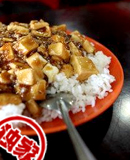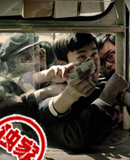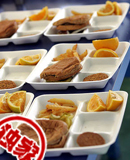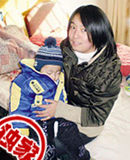美国不为人知八个“第一次”(组图)
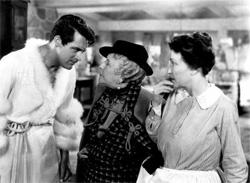
本人选自《东方文化西方语的博客》,点击此处查看原文
第一次把“gay”用作“同性恋”
不知从何时起,“gay”的含义不仅仅是单纯的“快乐、高兴”了。早在18世纪,人们就用“gay”形容放荡不羁的人或者伤风败俗的场所。1800年,“gay house”是妓院的代名词。到了1920年,美国现代派作家格特鲁德•斯坦和剧作家诺埃尔•科沃德,在散文中开始用“gay”影射“同性恋”,但对文学圈子以外的人,这样的用法还很陌生。1938年,电影《育婴奇谭》正式把“gay=同性恋”的概念介绍给大部分美国人。在某段场景中,卡莱•葛伦被凯瑟琳•赫本劫持为人质,凯瑟琳•赫本把他所有的衣服都送到了洗衣店,她找了一件女人的衣服为他蔽体。后来,卡莱•葛伦穿着女人的服装去为来访者开门。面对对方惊讶的表情,他连忙解释说“没什么好奇怪的,我只是突然之间变成了gay(同性恋)”。
第一家汉堡连锁店
虽然麦当劳、汉堡王风靡全球,但他们在快餐界只能算“后生晚辈”。早在20世纪初,沃尔特•安德森和比利•英格拉姆就在餐馆经营中合伙引进了亨利•福特的流水线生产模型。1921年,他们在美国堪萨斯州威奇托市开了全美第一家汉堡连锁店——“白色城堡”。当时美国人质疑汉堡中碎牛肉的安全性,而安德森完全从顾客的角度出发。严格监控厨师把牛肉馅夹进圆饼放到烤架上的过程。餐馆的装潢以银白色为主,暗示着食物的干净程度。第一家店开张后大受追捧,于是他们又在内布拉斯加州和明尼苏达州陆续开了几家分店。
第一张社会保障卡
1936年11月,美国社会保障部门第一次提出发放社会保障号的计划时,得到邮政部门的大力支持。社保部门给各企业员工发放了SS-5表格,表格填完后通过邮寄的方式送回。由于前1000张表格是同时寄出的,所以没有办法精确知道谁是第一个收到信的人。最终,这1000名申请人的档案被送往位于巴尔的摩的办事处。统计部门的负责人从这一堆档案中随手抽出一封,然后宣布其为第一张社会保障卡。经核实,这张卡号为055-09-0001的卡属于约翰•戴维•斯威尼。不过他在61岁时便因病去世,没有享受到社会保障卡的福利。
第一张汽车保险单
1896年,美国马萨诸塞州的工程师吉尔伯特•卢米斯自行研制了单气缸蒸汽驱动汽车。他打算开一家汽车制造公司,为了获得创业基金,他要驾车去不同的州会见有兴趣的投资商。由于道路坑洼不平,再加上过往的马车、脚踏车络绎不绝,他决定为自己的汽车买份保险。经过讨价还价,卢米斯花了7.5美元促成了第一张汽车保单,保额为1000美元。
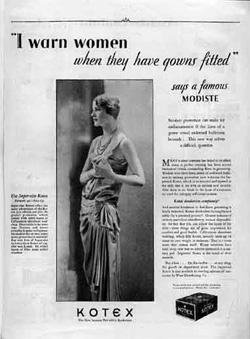
第一个卫生巾广告真人模特
在女性开始剪短发、露胳膊的20世纪20年代,女性卫生巾广告的表现形式仍然非常保守。直到1928年,这些广告还是以铅笔或蜡笔描绘的女性为主,从没出现过真正的模特。有一次,摄影师爱德华•斯泰肯把以女孩李•米勒为主题的摄影作品卖给了高丝洁卫生巾公司。从此,卫生巾广告开始流行使用真人模特。李•米勒在美国的模特生涯并没有因此而一帆风顺,她之后去巴黎进修了摄影技术,最终成为一名摄影师。
Class Name 101
The first recorded use of an introductory class being designated as “101” was in a University of Buffalo course catalog dated 1929. However, it wasn’t until the early 1930s—when students started regarding a university degree as a means to a better job and schools added more specialized classes to their curriculum—that universities in the U.S. started using digits to identify their courses. Students were also traveling further afield after graduation in search of work, so it became important for a potential employer to be able to compare candidates: Was a passing grade in Cost Accounting 203 at Kent State the same as one in Business Accounting 4 at the University of Michigan?
Eventually, colleges started using a more uniform three-digit designation, in which the first digit indicated the academic level (1=Freshman, 2=Sophomore, etc。). The second digit usually represented a department (English, Science, etc。) and the third the level of the class within the department. These were not hard and fast rules, and still vary from school to school. However, as the three-digit system became more commonplace, it seemed that “101” always represented a basic beginning course, no matter what the discipline. By the late 1960s, the phrase was starting to enter the vernacular at large, outside of the collegiate realm。
Telephone Entertainment
Which came first, 1-800-PARTYON or 976-BABE? Actually, when telephone entertainment started out, it was geared toward lonely people seeking spiritual fulfillment rather than frisky young singles. On Thanksgiving Eve 1955, Rev. R.R. Schwambach, the pastor of Bethel Tabernacle Church in Evansville, Indiana, rented a grey, typewriter-sized machine from Indiana Bell. He recorded a 43-second non-denominational prayer and hooked the gadget up to the church’s telephone. An article in the November 23, 1955, edition of the Evansville Courier printed the phone number for “Dial-a-Prayer” and explained that folks feeling the need of comfort and inspiration could call at any hour, day or night. Rev. Schwambach thought he’d leave the machine up for the duration of the holiday weekend, but the service proved to be so popular (the phone company reported a backlog of some 5,000 calls and ordered the church to install additional lines) that he continued to record a new message every day. Similar services started popping up first at other churches in Indiana, then across the country。
Wet T-Shirt Contest
The first wet T-shirt contest wasn’t held in some tropical sunny clime; it took place in January at a ski resort in Idaho. In 1969, a sales rep for a company called K2 hired a filmmaker to shoot some footage of professional skiers “hotdogging” on the slopes in Sun Valley. The 12-minute film was used as a promotional tool to sell K2’s new line of skis, and the distributors loved it. They clamored for a new film the next year, and the next. In January 1971, production on the third film was wrapping up when a K2 rep informed the filmmaker that the following week was “airline week” at Sun Valley, and gave him 200 K2 T-shirts to give away to the stewardesses (as they were still called at the time) who would be attending. Officials got together and decided to award a prize to whomever looked the “best” in a T-shirt。
After a few rounds of drinks, they decided to add a degree of “difficulty” to the contest—the ladies would have to dive into the resort’s heated pool clad in the shirt, and extra points would be awarded if she did so sans brassiere. Not surprisingly, the event was a roaring success. K2 staged a similar event later that year at the Red Onion in Aspen, and that time Playboy had photographers on the sidelines. Many of the participants were later featured in a full-color spread。
相关链接
- 美国扫黄警察如何钓小姐 2010-02-23 11:15
- 山东省滨州市为留学人才建绿色通道 2010-02-23 11:14
- 高校校长:斯坦福给中国大学的启示 2010-02-23 11:00
- 美国允许钓鱼执法 警察扫黄钓小姐 2010-02-23 10:54
- 斯坦福才子:我学会六种语言的秘诀 2010-02-23 10:46


